Source, by: Flags of the World, Wikipedia (RU)



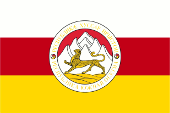
Flag of the President,
ratio = 2:3,
Source, by: Flags of the World, Wikipedia (RU)




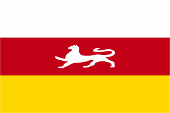
1991–1992,
Flag of National Guard,
ratio = 2:3 (?),
Source, by: Wikipedia (RU), vexillographia.ru




The flag of South Ossetia features three horizontal stripes in white, red and gold. The flag is based on the design of the flag of North Ossetia, which borders South Ossetia to the north but belongs to Russia. The appearance of the flag was legally regulated for the first time with the regulation "On the State Flag of the Republic of South Ossetia" by resolution of the Supreme Soviet of the Republic of South Ossetia from 30th of March in 1992. A Confirmation was made by the Constitutional Law of the Republic of South Ossetia "On the State Flag of the Republic of South Ossetia" from 28th of February in 2019. The colours are also established in the Pantone color spectrum: red = pt 186 c, yellow = pt 012 c. The colour white stands for purity and nobility, red stands for courage, strength and honor, yellow stands for abundance, well-being and prosperity. The colours and their meaning go back to the three clans of the Nart in the old Ossetian Nart-Epos from the 8th century. The Ossetians are descendants of the Persian people of the Alans. There are only a few photos of the country's other flags but there is also a lot of ambiguity. A photo shows the country's president with the tricolour, but in the middle it shows the country's round coat of arms in a reduced form. It could be the president's flag. There is another flag from the early 1990s that was often considered the flag of South Ossetia. It shows the silhouette of a snow leopard in the middle of the red stripe. This was a flag, that members of the National Guard created on a private initiative.
Source: Wikipedia (RU),
vexillographia.ru,
Flags of the World,
Volker Preuß

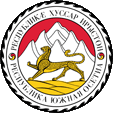
since 1999,
Coat of arms of South Ossetia,
Source, by: Flags of the World

The coat of arms was adopted on 19th of May in 1999 and shows a snow leopard within a Caucasian landscape. It corresponds to the coat of arms of North Ossetia, but it is surrounded by a silver band, showing the name of the republic in Ossetian and Russian. It was created by the artist Murat Dzhikayev. The image is based on the so-called "Banner of Ossetia", which is known from a sketch by Vakhushti Bagrationi. Bagrationi was a Georgian prince, historian and geographer of the early 18th century who worked in Russia.
Source:
Wikipedia (RU)

Position of Georgia:
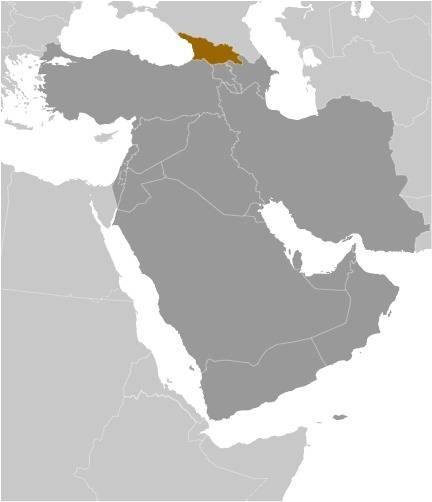
Source: CIA World Factbook
Position of South Ossetia in the North of Georgia:
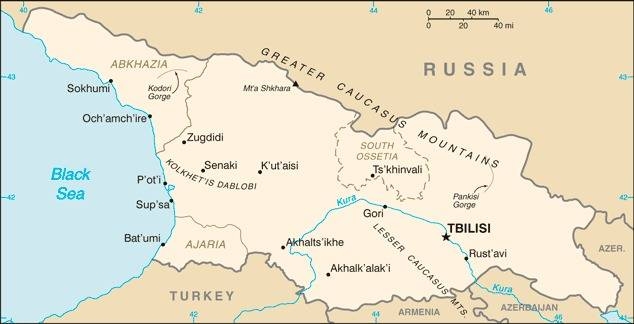
Source: CIA World Factbook

Area: 1.500 square miles
Inhabitants: 53.532 (2015), mostly Ossetians (Iron)
Religions: mostly Christian Orthodox, some Muslims
Density of Population: 36 inh./sq.mi.
Capital: Zchinwali (1934–1961 Staliniri), 30.432 inh. (2015)
official Languages: Ossetian, Russian, regionally also Georgian
Currency: Russian Rubel (RUB, Rbl.) = 100 Kopeks
Time Zone: GMT + 3 h
Source: Wikipedia (DE)

Antiquity · the Alans settle in the Northern Caucasus
370 · the Alans become subjected by the Huns, a part of the Alans flees from the Huns (Great Transmigration, "Migration Period") over half Europe to the Iberian Peninsula (years 420-429), parts come to Africa
4.–5. century · the Alans settle now even southern the Caucasus Mountains, conflicts with Georgia
520 · christianization
1223 · invasion of the Mongols in the Northern Caucasus, expulsion of the Alans to Hungary, leftovers stay and form up new as Ossetes
1774 · North Ossetia (northern the Caucasus Mountains) becomes annexed to the Russian Empire, to the Gouvernement of Wladikawkas, South Ossetia (southern the Caucasus Mountains) comes to Georgia
1801 · Georgia becomes annexed to the Russian Empire, Gouvernement Tiflis (Tbilissi)
1918 · Georgia becomes independent from Russia
1921 · invasion of the soviet red army, erection of the soviet dictatorship, Georgia becomes a part of the Soviet Union
1922 · establishment of a South Ossetian Autonomous District (South Ossetia) as a part of Georgia
1922 · incorporation into the Transcaucasian Soviet Federative Socialistic Republic
1924 · establishment of the North Ossetian Autonomous District (North Ossetia)
1936 · dissolution of the Transcaucasian Soviet Federative Socialistic Republic
1943–1944 · deportation of a part of the Ossetes to Sibiria
1957 · return of the survivors
10th of November 1989 · proclamation of the South Ossetian Autonomous Soviet Republic, not recognized by the Sowjet Union, battles with Georgia
20th of September 1990 · proclamation of the Democratic Soviet Republic of South Ossetia, battles with Georgia
1991 · rename of the Democratic Soviet Republic of South Ossetia in Republic of South Ossetia
August 2008 · "Olympia War", Georgia occupies South Ossetia and becomes pushed aside by Russia
26th of August in 2008 · Russia recognizes the independence of South Ossetia
Source: Wikipedia (DE)

The name "Ossetia" comes from the Ossetes, an Iranian nation its roots reach back to the Alanes. The Ossetes which are really designated "Ossen", name itself "Iron" or "Digoron".
Source: Die Völker der Erde


![]()

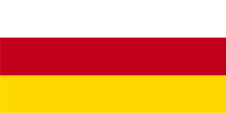





![]()
